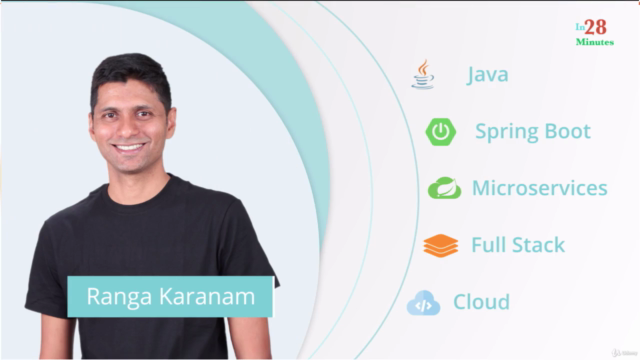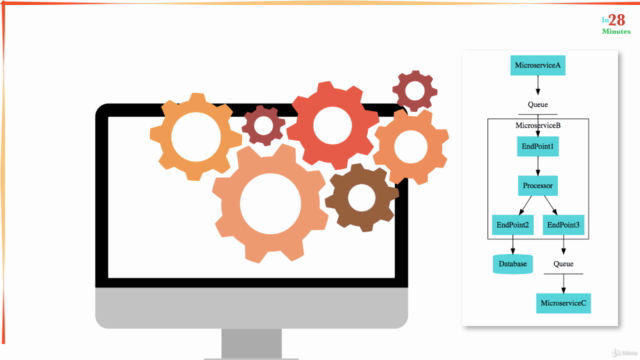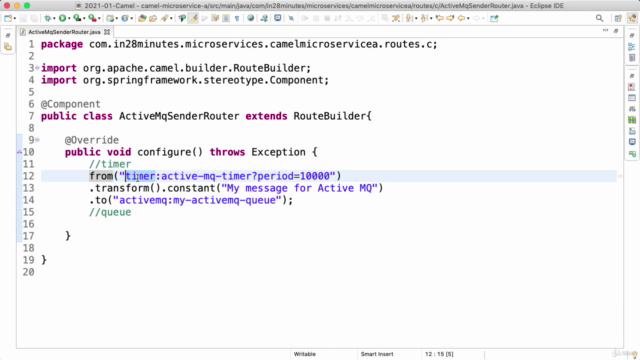Learn Apache Camel Framework with Spring Boot

Why take this course?
🚀 Master Apache Camel Framework with Spring Boot 🐝
Welcome to the ultimate course for mastering Apache Camel within the context of Enterprise Integration! This comprehensive learning journey is meticulously designed to guide you through the complexities of integrating systems using Apache Camel in conjunction with Spring Boot. By the end of this course, you'll be well-versed in creating efficient and effective integration patterns with ActiveMQ, Kafka, and REST APIs. 🌟
Course Headline: 🎓 Learn Apache Camel Framework with Spring Boot
Are you facing the intricacies of Enterprise Integrations? The advent of Microservices and Cloud computing has only amplified the complexity. Fear not, as Apache Camel emerges as a powerful ally to simplify your integration challenges while allowing you to focus on the core business logic.
What You'll Learn:
🔹 Getting Started with Apache Camel and Spring Boot:
- Step 01: Dive into the foundational aspects of Apache Camel and Enterprise Integration.
- Step 02: Designing Microservices specifically for interacting with Apache Camel.
- Step 03: Crafting your first Apache Camel Route to facilitate message processing.
- Step 04: Utilizing Spring Beans to enhance your Camel Routes with transformations.
- Step 05: Processing messages in real-time using Camel Processors.
- Step 06: Engaging with Files in your Camel Routes for seamless data exchange.
🔹 Integrating Apache Camel with ActiveMQ and Kafka:
- Step 01: Setting up a Docker container to run ActiveMQ for robust message queuing.
- Step 02: Implementing a sender route in Microservice A to publish messages to ActiveMQ.
- Step 03: Developing a receiver route in Microservice B to consume messages from ActiveMQ.
- Step 04: Understanding the terminology and architecture of Apache Camel.
- Step 05: Unmarshalling JSON and XML messages into Java Beans within your routes.
- Step 06: Crafting Kafka-based Camel Routes for both sending and receiving messages.
🔹 Exploring Apache Camel Further:
- Step 01: Making REST API calls from a Camel Route to facilitate web service integration.
- Step 02: Incorporating Choice and Simple language capabilities for complex routing decisions.
- Step 03: Creating endpoints that can be reused across different routes.
- Step 04: Designing complex deciders for sophisticated decision-making within your routes.
🔹 Exploring Apache Camel Enterprise Integration Patterns:
- Step 01: Understanding and implementing the Pipeline and Multicast pattern.
- Step 02: Applying the Content-Based Routing and Splitter patterns.
- Step 03: Exploring the Splitter pattern for handling multiple message splits.
- Step 04: Implementing the Aggregation pattern to handle batches of messages.
- Step 05: Utilizing the Routing Slip pattern for processing complex message routing scenarios.
- Step 06: Leveraging the Dynamic Routing pattern for flexible and adaptive message flows.
🔹 Exploring Apache Camel Best Practices:
- Step 01: Implementing best practices for dynamic configuration, standalone components, and comprehensive logging.
- Step 02: Adding tracing, Dead Letter Queue, and WireTap functionalities for advanced routing scenarios.
- Step 03: Ensuring message security with encryption to protect sensitive data in transit.
- Step 04: Wrap up your learning journey with a comprehensive understanding of Apache Camel's robust capabilities.
Why Take This Course?
- Practical Knowledge: This course is designed to provide you with hands-on experience and a deep understanding of Apache Camel and its role in Enterprise Integration.
- Real-World Scenarios: You'll learn through practical examples that reflect real-world challenges in system integration.
- Versatility and Performance: Gain the skills to handle complex integration tasks efficiently, from simple routing to sophisticated pattern implementations.
- Comprehensive Guide: With a focus on Spring Boot compatibility, this course serves as a complete guide for developers looking to integrate various systems with Apache Camel.
Embark on your journey to becoming an Apache Camel expert today! 🏃♂️💻
Ready to dive in? Enroll now and transform the way you approach system integration with Apache Camel Framework and Spring Boot. Let's make complexity a thing of the past! 🚀🎓
Course Gallery




Loading charts...
Comidoc Review
Our Verdict
This course offers an informative introduction to Apache Camel, providing learners with a solid foundation in Java DSL. Although there is room for improvement regarding organization and thoroughness, it serves as a valuable starting point for beginners. Covering real-world use cases adds relevance to the content; however, further in-depth exploration of certain topics coupled with a better structure could lead to an even more engaging learning experience—making this course a worthwhile endeavor for those seeking expertise in Apache Camel framework implementation within Spring Boot applications.
What We Liked
- Covers Apache Camel basics in Java DSL, enabling students to apply the skills in a corporate job.
- Provides practical examples and relevant content that align with real-world use cases.
- Comprehensive introduction for learners new to Apache Camel, making it accessible for beginners.
- Demonstrates a good balance between theory and hands-on exercises, such as Docker implementation.
Potential Drawbacks
- The course lacks detailed explanations of specific topics like data types, input parameters, and best practices, leaving room for further improvement.
- Some sections could benefit from more structure and clarity to enhance the learning experience.
- There is a need for improved coverage on Camel's documentation, navigation, and associated tools.
- A few students have found minor issues with code examples, which might affect their understanding of certain concepts.